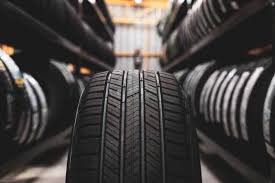As the temperature drops and icy roads become more common, preparing your vehicle for winter is essential. Among the most important preparations is switching to winter tyres—a change that drastically improves safety and handling in cold weather conditions. But what if you’re on a budget? The answer for many drivers is simple: winter part worn tyres.
In this article, we’ll cover everything you need to know about winter part worn tyres, their benefits, how to find the cheapest winter part worn tyres, and tips for buying quality second-hand tyres that still perform well.
What Are Winter Part Worn Tyres?
Winter part worn tyres are tyres that have been previously used but still have enough tread and life left to be sold and used again. These are not summer or all-season tyres—they are specifically designed for winter use, made with softer rubber compounds and deeper tread patterns that perform better in low temperatures, ice, slush, and snow.
They are often imported from countries like Germany, where it is mandatory to use winter tyres during certain months. Many of these tyres are removed early because of strict regulations or vehicle upgrades, even though they still have significant life left.
Why Are Winter Part Worn Tyres Popular?
- Cost Savings
New winter tyres can cost between £300–£600 for a full set, depending on the brand and size. On the other hand, part worn winter tyres typically cost 50–70% less. If you’re trying to winter-proof your vehicle on a budget, they offer great value. - Eco-Friendly Choice
Buying part worn tyres helps reduce waste and supports recycling. Rather than sending perfectly usable tyres to landfills, you’re giving them a second life, which is better for the environment. - Short-Term Use
If you’re planning to use winter tyres for just a few months every year, buying new ones might seem unnecessary. Part worn tyres offer a practical solution for limited, seasonal use.
Benefits of Winter Tyres Over Standard Tyres
Even part worn winter tyres can outperform brand-new summer tyres in cold weather. Here’s why:
- Superior Grip: Designed with extra sipes (tiny slits in the tread) to improve traction on snow and ice.
- Cold Weather Rubber Compound: Unlike summer tyres, winter tyres remain flexible in freezing temperatures, maintaining grip and control.
- Shorter Braking Distances: Even when used, winter tyres offer significantly shorter braking distances on cold or icy roads.
Where to Buy the Cheapest Winter Part Worn Tyres
If you’re searching for the winter part worn tyres cheapest, it’s essential to shop smart. Here’s where to look:
1. Local Tyre Dealers
Independent tyre shops and part worn specialists often have affordable stock. You can inspect the tyres in person, check the tread depth, and often get them fitted on the spot.
2. Online Marketplaces
Websites like eBay, Gumtree, and Facebook Marketplace often list winter part worn tyres at low prices. Be sure to ask for detailed images, tyre specifications, and whether the seller offers returns or guarantees.
3. Tyre Recycling Centres
Some tyre recycling companies sell part worn tyres at budget-friendly rates. These tyres are usually pressure tested and examined for defects before resale.
4. Specialist Online Retailers
There are UK websites dedicated to part worn tyres such as:
- PartWornTyres.com
- UsedTyresUK.co.uk
- TyreTrader.co.uk
These sites allow you to search by tyre size, season, and price range.
How to Choose Quality Winter Part Worn Tyres
Choosing the right part worn winter tyres is essential for your safety. Here’s what to look for:
✅ Tread Depth
In the UK, the legal minimum tread depth is 1.6mm, but winter tyres start to lose performance below 4mm. Look for tyres with at least 5–6mm tread for optimum safety and longevity.
✅ Even Wear
Avoid tyres that show uneven wear—this could mean they were removed from a poorly aligned vehicle. Look for a consistent tread across the width of the tyre.
✅ Tyre Age
Tyres have a manufacturing date printed on the sidewall (e.g., “DOT 3019” means made in week 30 of 2019). Avoid tyres older than 6 years, as rubber can harden and crack over time.
✅ No Visible Damage
Never buy tyres with bulges, sidewall cracks, or exposed cords. These can be dangerous, especially in winter conditions.
✅ Winter Tyre Symbol
Genuine winter tyres have a three-peak mountain snowflake symbol on the sidewall. This indicates the tyre meets strict winter performance standards.
Legal Requirements for Part Worn Tyres in the UK
Part worn tyres are legal in the UK only if they meet these requirements:
- Minimum tread depth of 1.6mm across the central ¾ of the tyre.
- No cuts, bulges, or visible damage.
- Clearly marked as “Part Worn.”
- Must have passed a thorough inspection.
Always buy from trusted sellers who follow UK safety regulations.
Pros and Cons of Winter Part Worn Tyres
| Pros | Cons |
| Much cheaper than new tyres | Shorter lifespan |
| Good for seasonal use | Possible hidden damage |
| Environmentally friendly | Limited availability in some sizes |
| Often good tread remaining | No manufacturer warranty |
Tips for Maintaining Winter Part Worn Tyres
Once you’ve fitted your part worn winter tyres, here’s how to keep them performing at their best:
- Check Tyre Pressure Weekly
Cold weather can reduce pressure quickly. Keep tyres inflated to manufacturer specifications. - Rotate Tyres
If you’re using them for multiple seasons, rotate them after each winter to ensure even wear. - Proper Storage
Store winter tyres in a cool, dry place when not in use. Avoid exposure to sunlight and moisture. - Inspect Regularly
Look for signs of wear, cracking, or embedded debris. Don’t ignore early signs of tyre failure.
Final Thoughts
Winter driving requires tyres that can handle slippery, wet, and icy conditions. While new winter tyres are ideal, winter part worn tyres offer an affordable alternative that still delivers improved safety, grip, and control during the coldest months.



